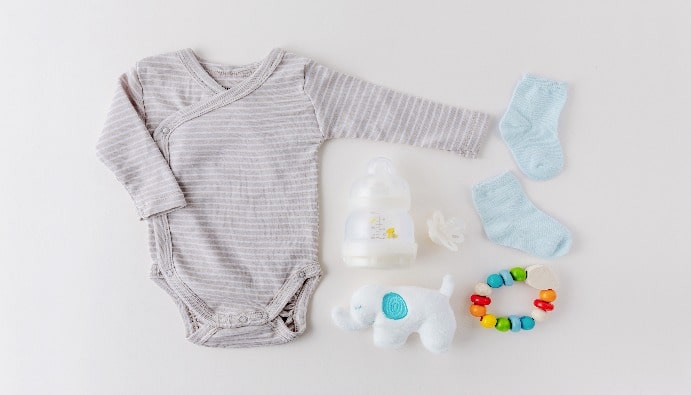Consumer Baby Product Tests: Safe and Healthy Products
Which Tests Should Be Performed On Consumer Baby Products?

Babies are the most vulnerable and in need of protection in the world. Not only visible environmental threats, but also many products used as baby products can pose a threat even if we cannot see them. Daily used products such as textiles, baby bottles, toys, pacifiers, etc., which are classified as consumer baby products, may contain harmful substances. For this reason, they must undergo tests and analyzes before being offered for baby use.
What are Baby Products?
Baby Clothing Products
- Baby Clothes: Clothes made of skin-friendly fabrics that babies can wear comfortably, such as bodysuits, bodysuits, overalls, dresses, pants, t-shirts.
- Baby Socks and Shoes: Soft and flexible socks or shoes that keep babies' feet warm.
- Baby Gloves and Hat: Gloves and hats worn to help protect babies from the cold.
- Baby Blanket: Soft and lightweight blankets that help keep babies wrapped and warm.
Baby Nutrition Products
- Baby Bottles and Milk Bottles: Baby bottles used for feeding milk, formula or liquid foods to babies.
- Baby Pacifiers: Pacifiers used for calming and comforting babies.
- Baby Formula: Ready-made baby foods that provide nutrition for babies other than breast milk.
- Baby Feeding Chair: A chair where babies can sit comfortably while eating.
- Baby Drinking Cup: Drinking cups that make it easier for the baby to drink water or liquids.
Baby Sleep Products
- Baby Pillows and Mattresses: Pillows and mattresses that make babies comfortable during sleep.
- Baby Crib or Cot: Safe cribs or cots used for babies to sleep.
- Baby Sleeping Bag: Sleeping bags that keep the baby warm and allow them to sleep comfortably.
- Baby Quilt and Blanket: Warm quilts and blankets that help protect babies against colds.
Baby Safety Products
- Baby Strollers: Strollers used for transporting babies outside. There are bidirectional, foldable and portable types.
- Baby Carry Bag: Practical carrying bags used to carry baby's belongings.
- Baby Carry Toys and Activity Centers: Toys that help babies develop their hand muscles and motor skills.
- Baby Protection Covers and Edge Protectors: Safety measures used to prevent babies from accessing dangerous areas in the home.
- Baby Fences and Playgrounds: Child safety fences that create areas where babies can play safely.
What are Baby Product Tests?
- Bisphenol - A (BPA): BPA is used in the manufacture of certain plastics, usually used in food and drink containers. However, even in small amounts, BPA can be harmful to babies.
- Phthalates: Phthalates are chemical compounds often used to make plastics more elastic and durable. These compounds can enter the body through ingestion, breathing or skin contact and can pose a risk to infants and potentially cause adverse long-term health effects in adults. The limit for phthalate content in children's toys or care products is 0.1 percent of DEHP, DBP or BBP phthalates.
- Flame Retardants: To meet flammability requirements and reduce the risk of materials catching fire, manufacturers add flame retardant chemicals to certain products. Some baby products that may contain flame retardants include floor mats, nursing pads, mattresses, chairs and strollers. Although these chemicals slow the spread of flames during a fire, they have adverse health effects on infants and children. Examples of flame retardants to look for include TDCPP, TOCP, TCEP, TPP and TCPP
- Formaldehyde Formaldehyde is a volatile organic compound (VOC), a harmful chemical that can easily evaporate. Baby hygiene products such as shampoo and soap may contain trace amounts of formaldehyde. If exposed to formaldehyde for long periods of time, babies can develop health problems.
Nanolab Laboratories Group continues to provide services within the scope of Consumer Baby Products Tests. We also provide services in Textile Analysis.
Contact us for more information.
You can follow us on LinkedIn for up-to-date news and posts about our services.
Follow our Instagram account to be informed about our latest blog posts.

